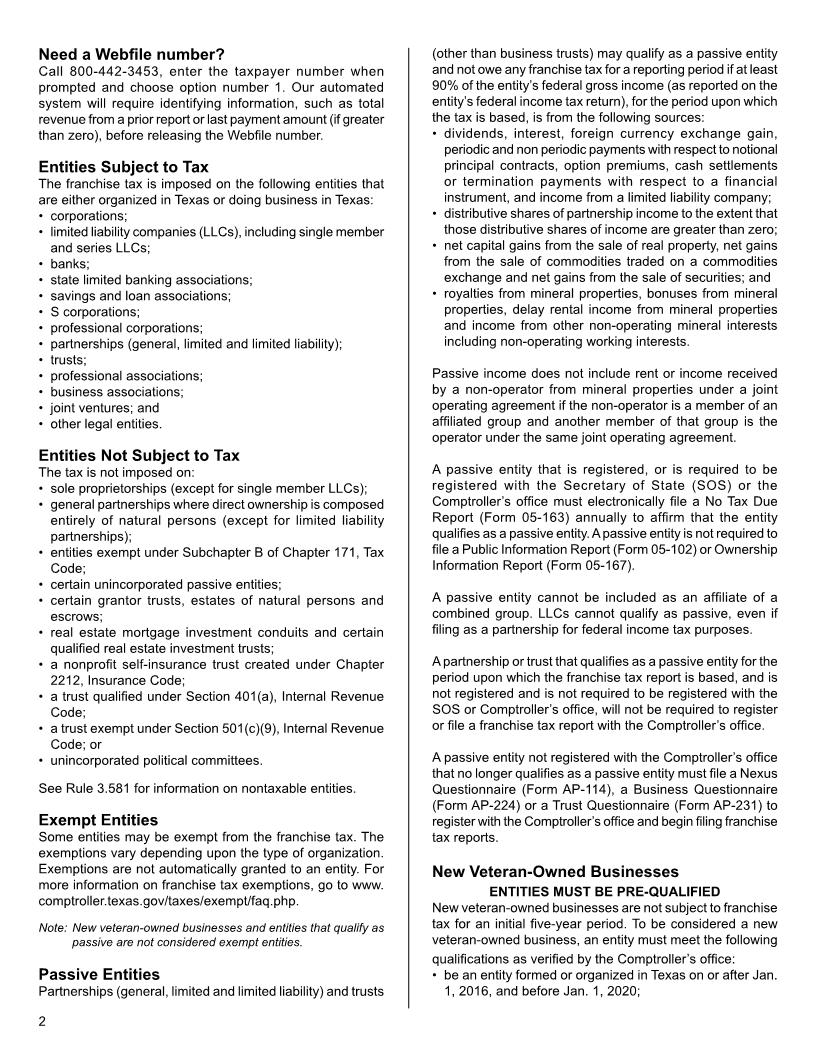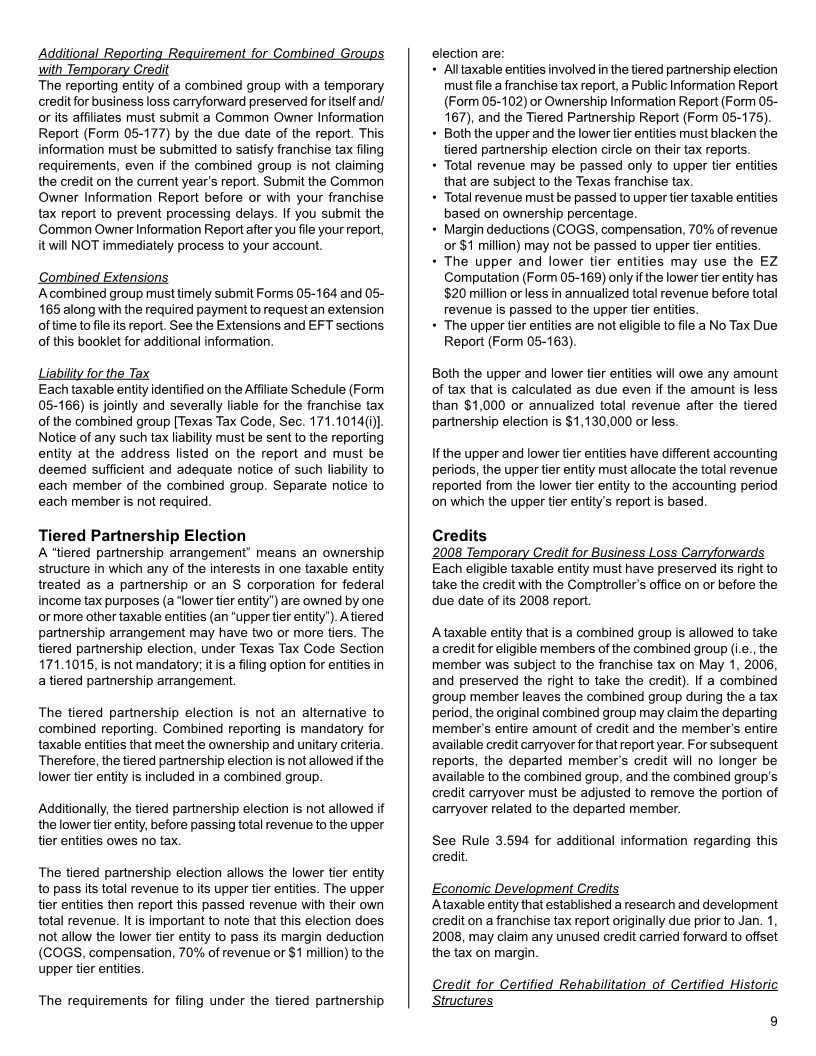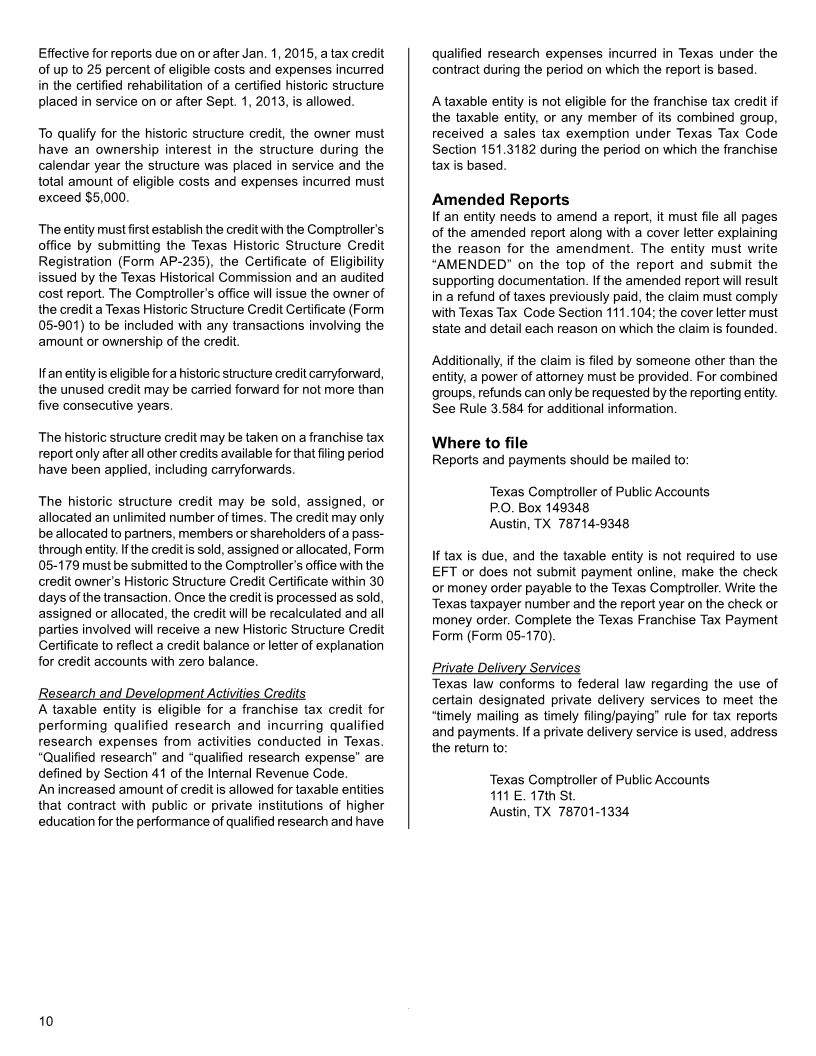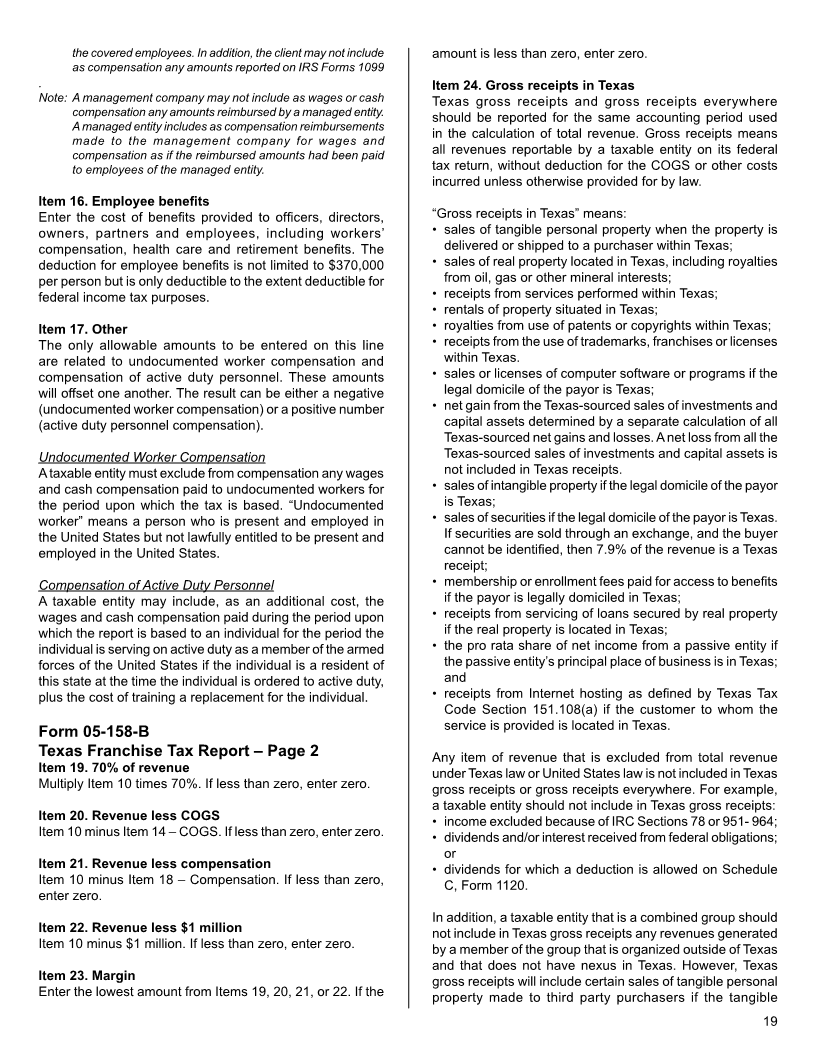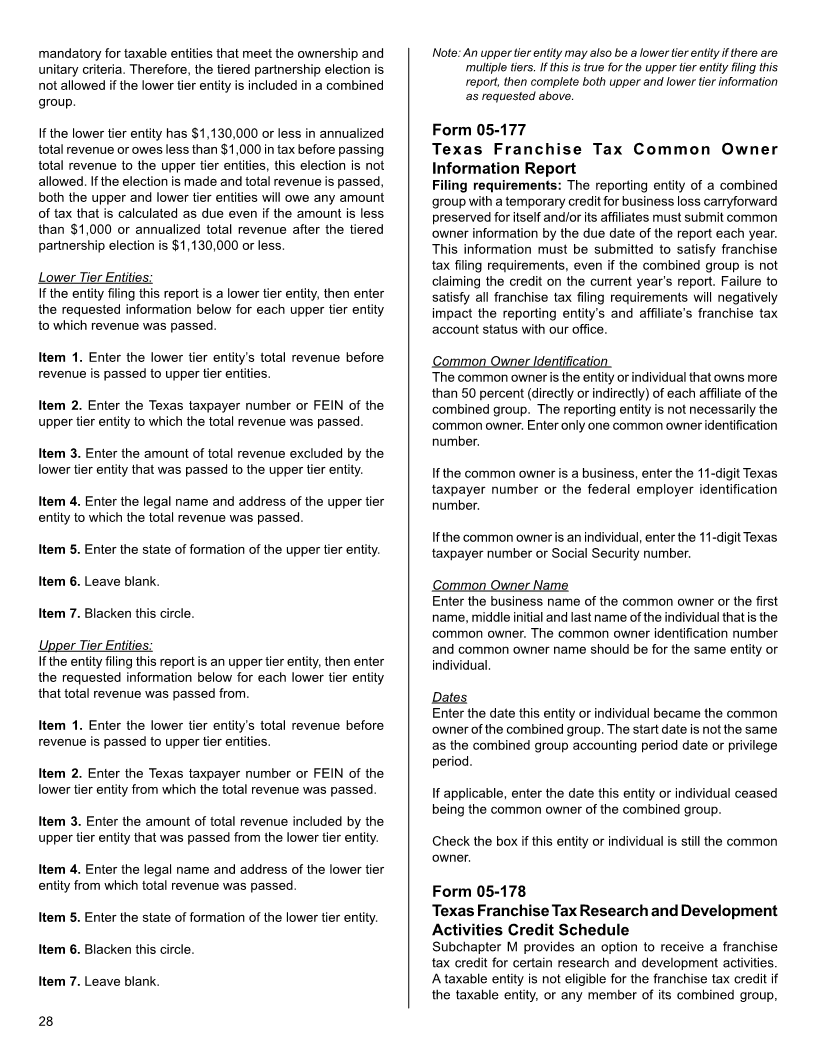
Enlarge image
2019 Texas Franchise Tax Report
FormInformation05-907 (4-19) and Instructions
Topics covered in this booklet: General Information
Amended Reports........................................................ 10 This booklet summarizes the Texas franchise tax law and
Annual Reports ............................................................ 4 rules and includes information that is most useful to the
Annualized Total Revenue ........................................... 3 greatest number of taxpayers preparing Texas franchise tax
reports. It is not possible to include all requirements of the
Change in Accounting Period ...................................... 5
Texas Tax Code Chapter 171. Taxpayers should not consider
Combined Reporting.................................................... 7 this tax booklet as authoritative law. Additional information
Credits ......................................................................... 9 about Texas franchise tax can be found online at www.
Disregarded Entities .................................................... 3 comptroller.texas.gov/taxes/franchise.
Due Dates.................................................................... 4
Electronic Funds Transfer (EFT) ................................. 6 What’s New for 2019?
Changes to the Requirement for Mandatory TEXNET
Entities Subject to Tax ................................................. 2
Payments
Entities Not Subject to Tax ........................................... 2 Effective Jan. 1, 2019, the mandatory requirement for paying
Estimated Tax .............................................................. 4 franchise tax through TEXNET is increased to $500,000.
Exempt Entities............................................................ 2 Taxpayers who remitted $500,000 or more in franchise tax
Extension of Time to File ............................................. 5
EZ Computation........................................................... 4 all franchise tax payments in the current calendar year by
File and Pay Franchise Tax Electronically ................... 1 TEXNET. The comptroller will notify taxpayers that have
Final Reports ............................................................... 4
Forfeiture ..................................................................... 6 Taxpayers who remitted $10,000 or more in franchise tax
General Information ..................................................... 1
Margin.......................................................................... 3 all franchise tax payments in the current calendar year by
Minimum Franchise Tax ............................................... 4 electronic funds transfer. The comptroller will notify taxpayers
New Veteran-Owned Businesses ................................ 2
Passive Entities ........................................................... 2
File and Pay Franchise Tax Electronically
Penalties and Interest .................................................. 6
Tax Rates..................................................................... 3 W
Tiered Partnership Election ......................................... 9 built-in edits to help you avoid mistakes that could lead to
Where to File ............................................................... 10 unnecessary billings and the forfeiture of an entity’s right to
T
available 24 hours a day.
Index of forms:
Form # Title If you owe tax, electronic payment options include credit
05-102 Public Information Report ........................ 12 card, electronic check (Web EFT) or TEXNET (enrollment
05-158-A Franchise Tax Report, page 1 .................. 12 required).
05-158-B Franchise Tax Report, page 2 .................. 19
TW need
05-160 Credits Summary Schedule ..................... 21
your 11-digit Texas taxpayer number and your 6-digit XT
05-163 No Tax Due Report ................................... 22 WlistFTnotice.Wis
05-164 Extension Request ................................... 23 www.comptroller.texas.gov/taxes/file-pay/.
.............................. 24
..................................... 25 Wnotfwitmore
05-167 Ownership Information Report ................ 26 than 10 members.
05-169 EZ Computation ....................................... 26 tax
05-170 Franchise Tax Payment Form .................. 27 preparation software. A list of approved providers is available
05-175 Tiered Partnership Report ........................ 27 at www.comptroller.texas.gov/taxes/franchise/approved-
05-177 Common Owner Information Report ........ 28 providers.php.
05-178 Research and Development Activities
Credit Schedule ................................... 28 Electronic Filing of No Tax Due Reports Required
As of January 1, 2016, No Tax Due Reports must be filed
05-180 Historic Structure Credit Supplement
for Credit Claimed on Report ............... 30 electronically.
1
